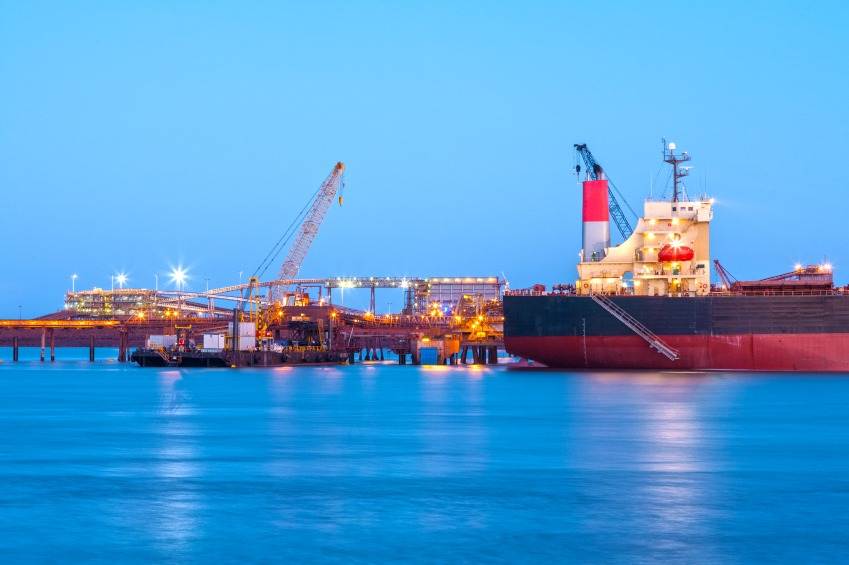By Stephen Koukoulas
The prices the rest of the world is prepared to pay for most of Australia’s export items are falling at a rapid rate.
At the same time, the prices we Australians pay for imported goods and services are rising which means, very simply, that our standard of living is being undermined by a decline in the terms of trade – the ratio of export to import prices.
None of this is a surprise. The Treasury has been factoring in falls in the terms of trade for the past few budgets and one critical reason why the Reserve Bank of Australia (RBA) has set official interest rates at record lows is because of the decline in export prices and resulting loss of national income.
In Australian dollar terms, the RBA index of commodity prices has fallen 27.9% since the October 2011 peak – in US dollar terms, the index has fallen 35.6% from the peak three years earlier.
At the same time, import prices have risen about 10% since 2011, in part driven by the fall of the Australian dollar which in recent months has tended to trade about US90- 95 cents compared with levels at US105 cents and more two to three years ago and due simply to the global inflation rate of about 2% per annum.
The fall in the terms of trade is a critical reason why recent commonwealth budgets have been dogged by lower revenue, with the weaker growth in nominal gross domestic product (GDP) slicing many billions of dollars off company profits, capital gains and therefore government tax receipts.
The economic policy response to these negative dynamics will be vitally important if real GDP growth is to remain a little above 3% and the unemployment rate at 6% or less in the next couple of years.
The RBA is playing its part. Official interest rates have been at a record low 2.5% since August 2013 and in recent commentary from the RBA, it seems this very easy monetary policy stance will remain in place for some time. While there is little it can do regarding the still-high level of the Australian dollar, senior officials take every opportunity to highlight the extent of the overvaluation and the desire for the Australian dollar to fall towards levels consistent with the terms of trade decline.
The issue for the government and fiscal policy appears more problematic. The Abbott government has some vague intention to return the budget to surplus, yet has spent just about as much as it has saved, meaning the budget bottom line is not much different to even the extreme forecasts in the mid-year economic and fiscal outlook presented by Joe Hockey in December 2013.
Spending on paid parental leave, roads, a medical research fund and cuts to company tax and the abolition of the mining tax and carbon price mean the restraint from the budget is not quite as extreme as the rhetoric suggests. In macro-economic terms, the budget is a bit of a dog’s breakfast.
That said, the RBA board noted recently, “public spending is scheduled to be subdued” and the stimulatory effects of low interest rates were going to be offset by “the effect of the planned fiscal consolidation”.
In other words, the RBA is of the view that government demand – which accounts for about 20% of GDP – is subdued at the very time the terms of trade are hurting the economy.
Not many economists would seriously doubt the broad goal of returning the budget to surplus over the next few years, but there is a risk that pursuing a surplus come what may could be contractionary for the economy and jobs. It would, for example, be wrong to pursue a surplus if the terms of trade were to fall more than is currently forecast by Treasury, as a further fiscal tightening on top of the shock to national income would all but guarantee a prolonged period of sub-trend economic growth and with it rising unemployment.
The evidence to support this risk comes from the experience over the past three years where the terms of trade have been falling. In that time, real GDP growth has been about 0.5% per year below trend and as a result, the unemployment rate has crept up from about 5% to an 11-year high around 6%. This has also been when the previous Labor government delivered one of the largest fiscal contractions ever seen, with the budget deficit narrowing from 4.2% of GDP in 2009-10 to just 1.2% of GDP in 2012-13. With the economy soft as a result of the fall in the terms of trade, it was wise to abandon the quest for a budget surplus in 2012-13.
Despite the perceptions of a tough budget from Hockey in May, in macro-economic terms there is still a budget deficit of 1% of GDP in 2015-16 and only in 2018-19 is there a tiny surplus.
If the terms of trade fall further than expected, the budget deficits will no doubt be larger than currently projected in much the same way the previous government rightly allowed the budget to remain in deficit when unexpected weakness in the terms of trade hit their revenue estimates.
The terms of trade remain one of the most interesting and hard-to-predict aspects of the Australian economy, but with rising global production for many commodities Australia produces and with demand growth moderating, the outlook points to further falls.
This means that interest rates will remain very low for a long time and the return to budget surplus, barring a policy brain snap from the government, may be pushed further down the track.

